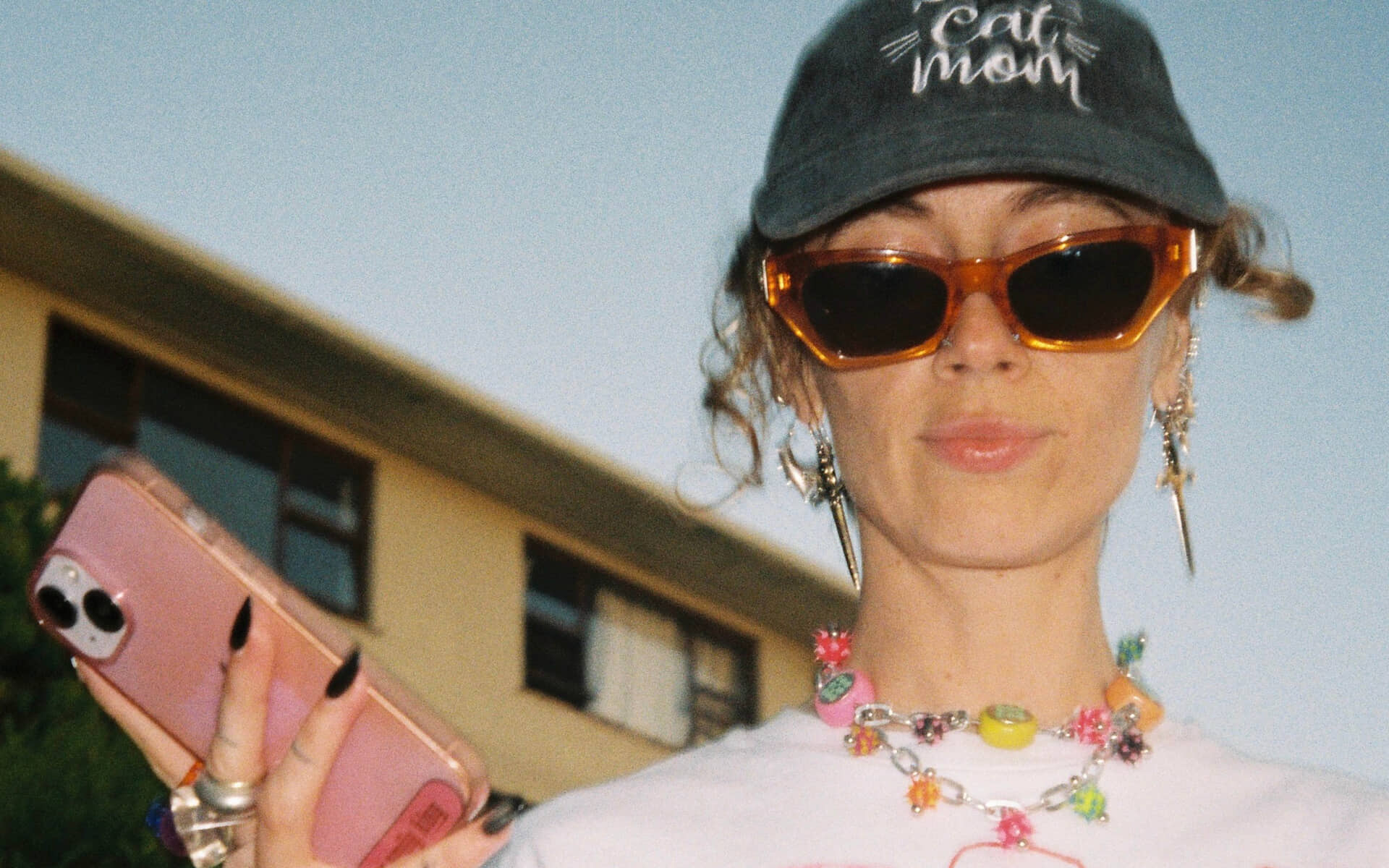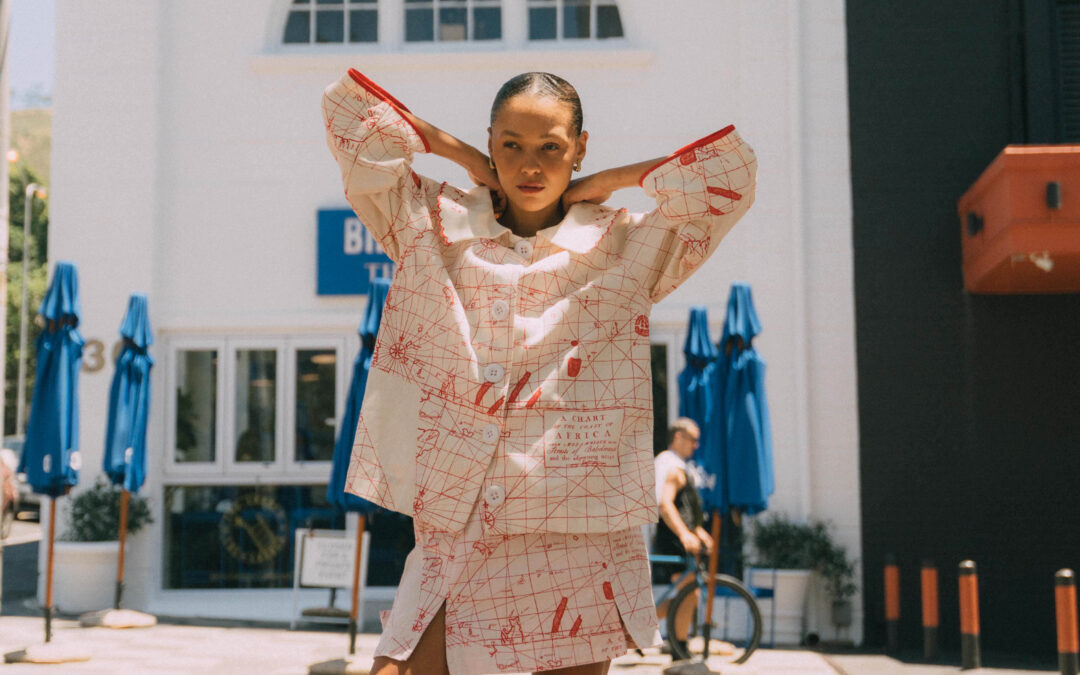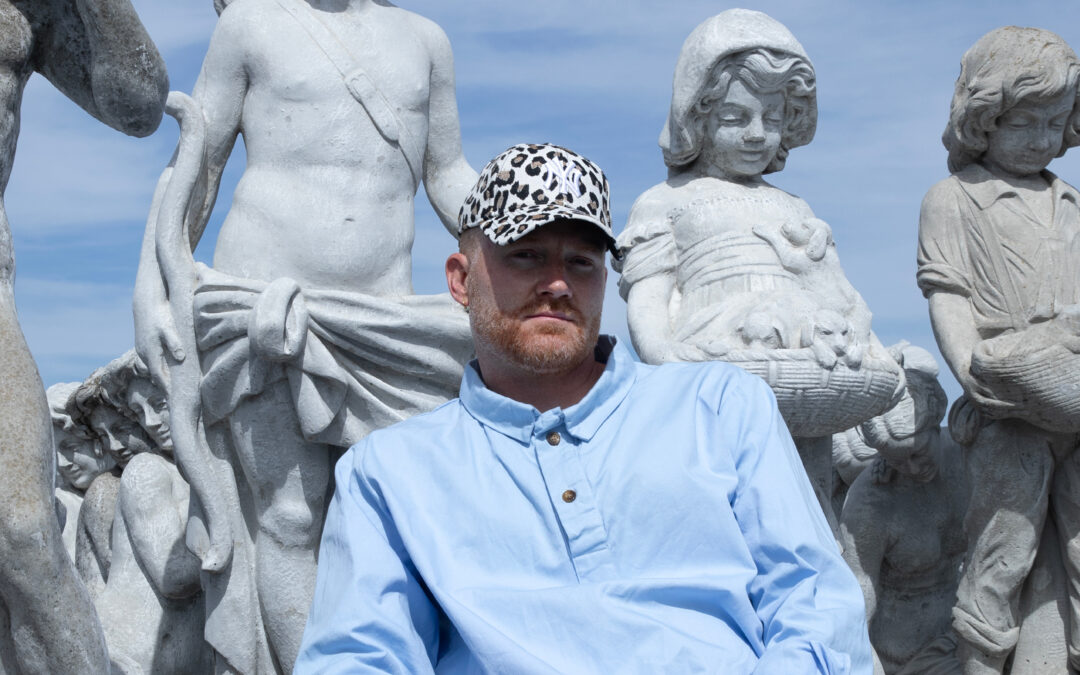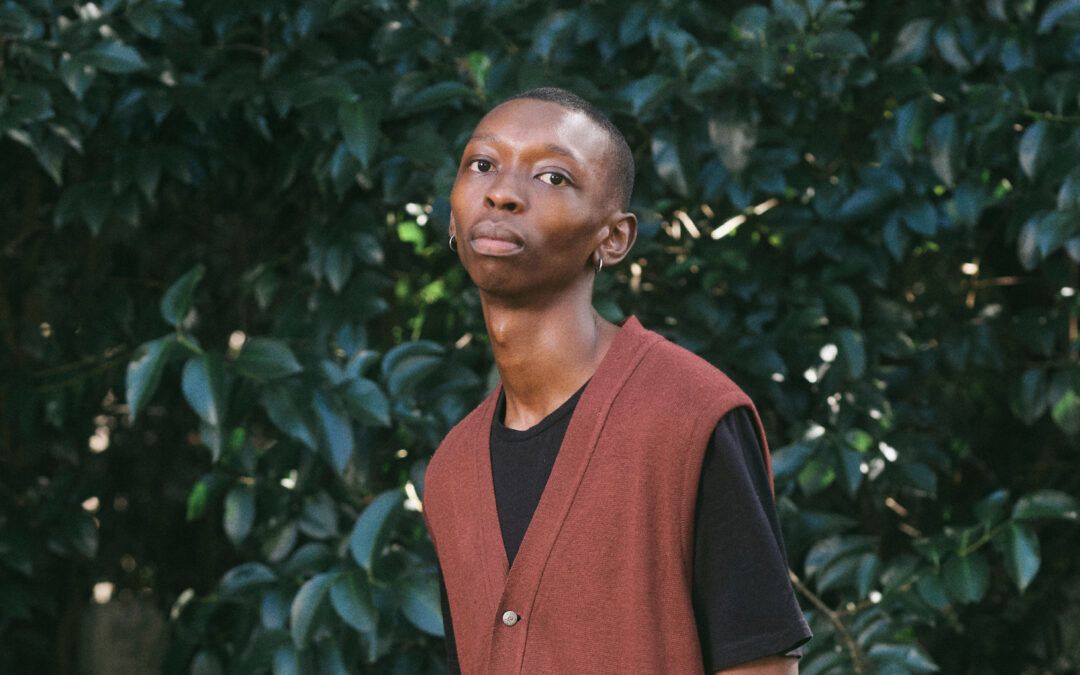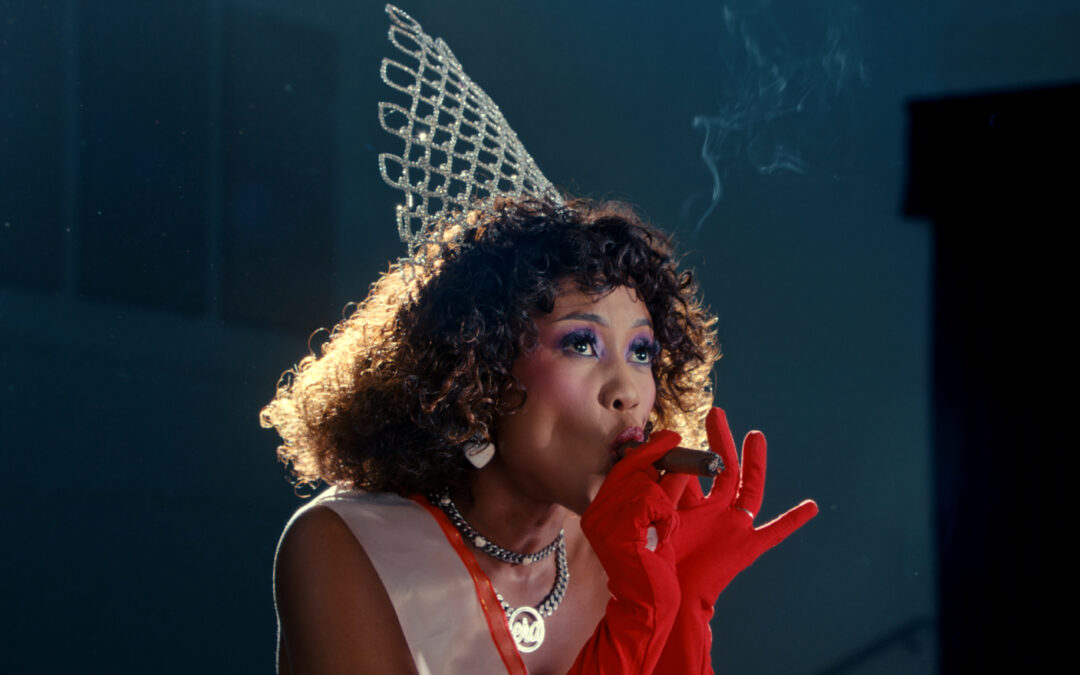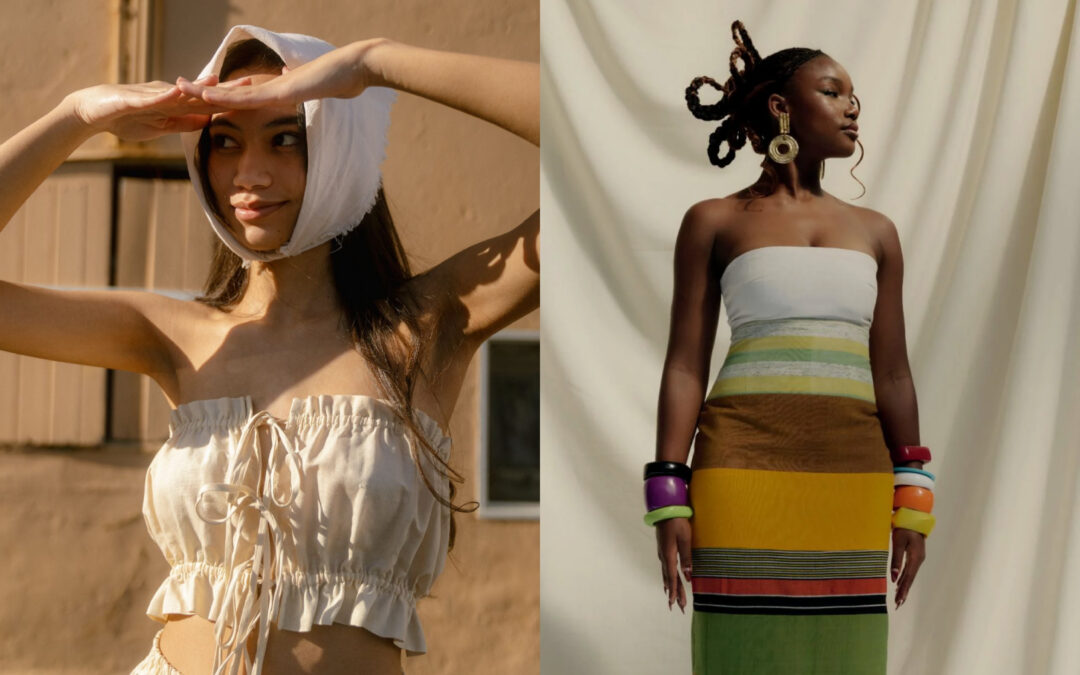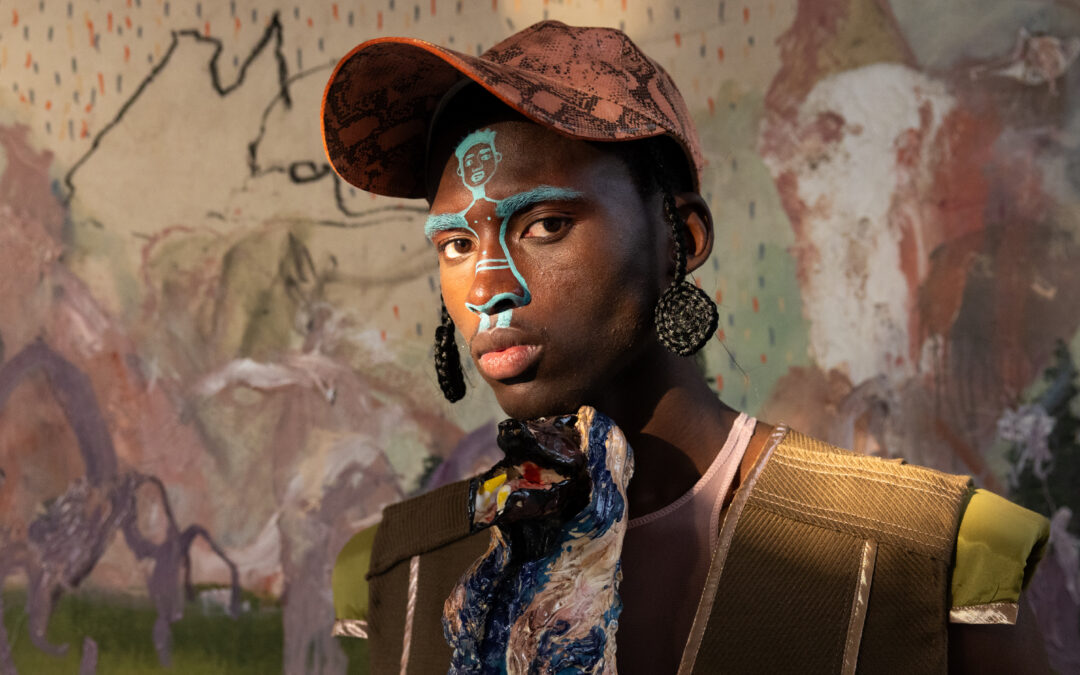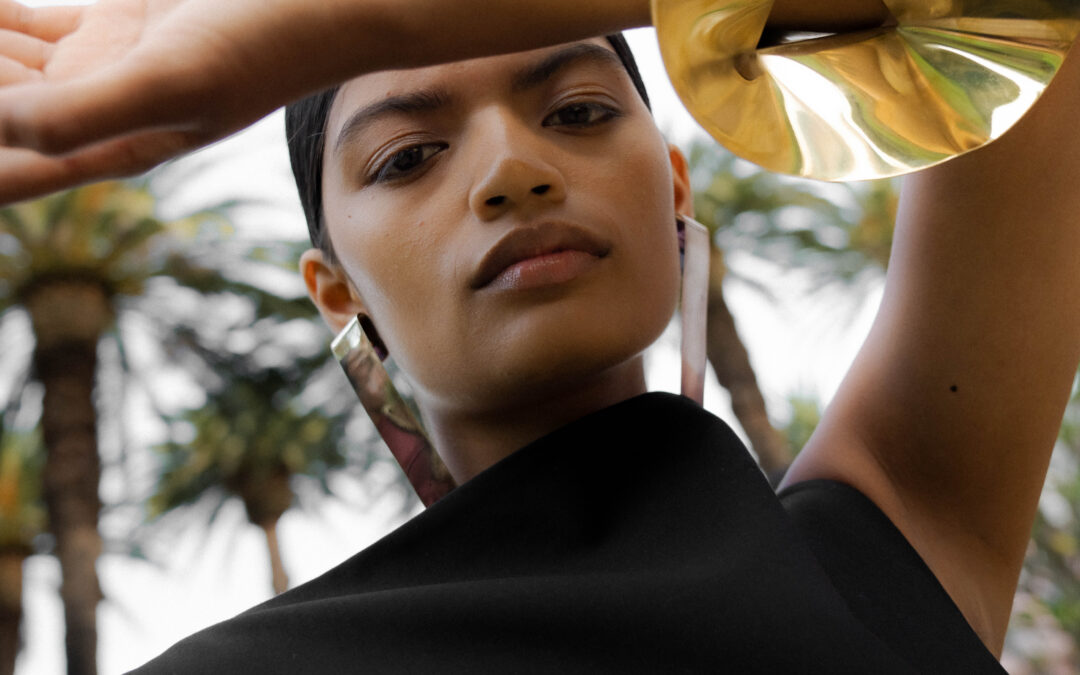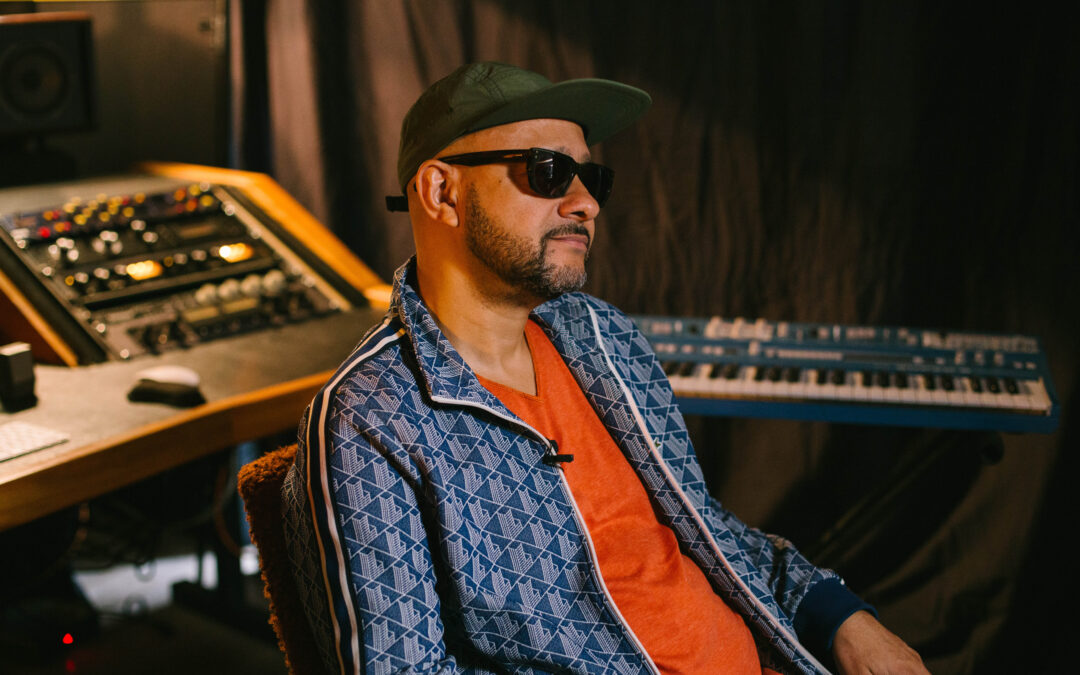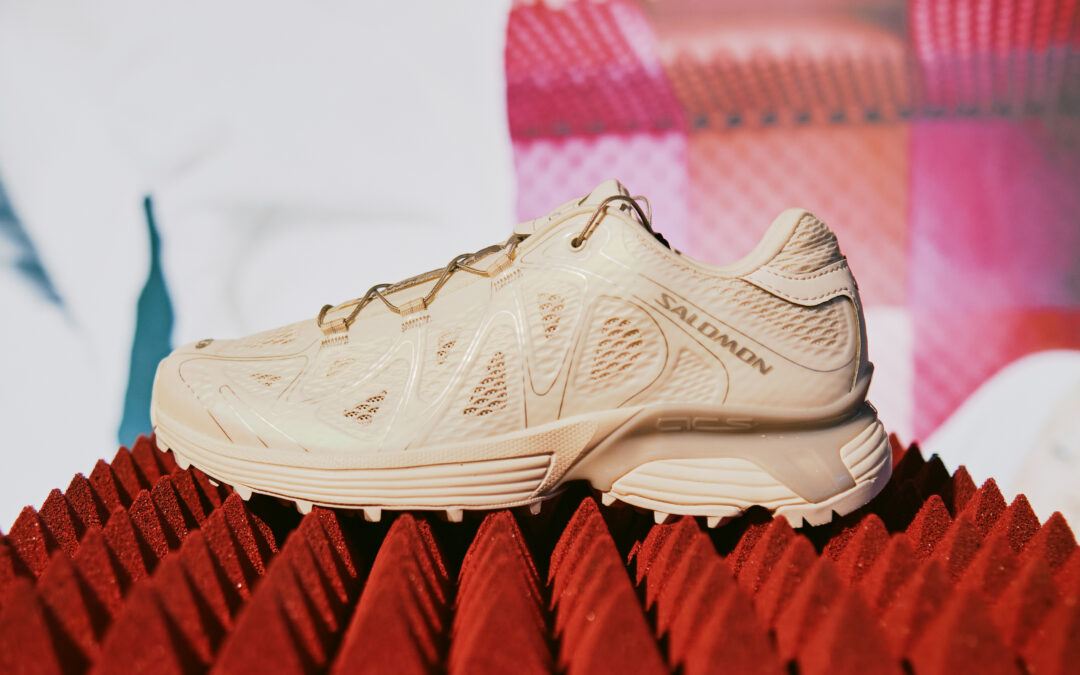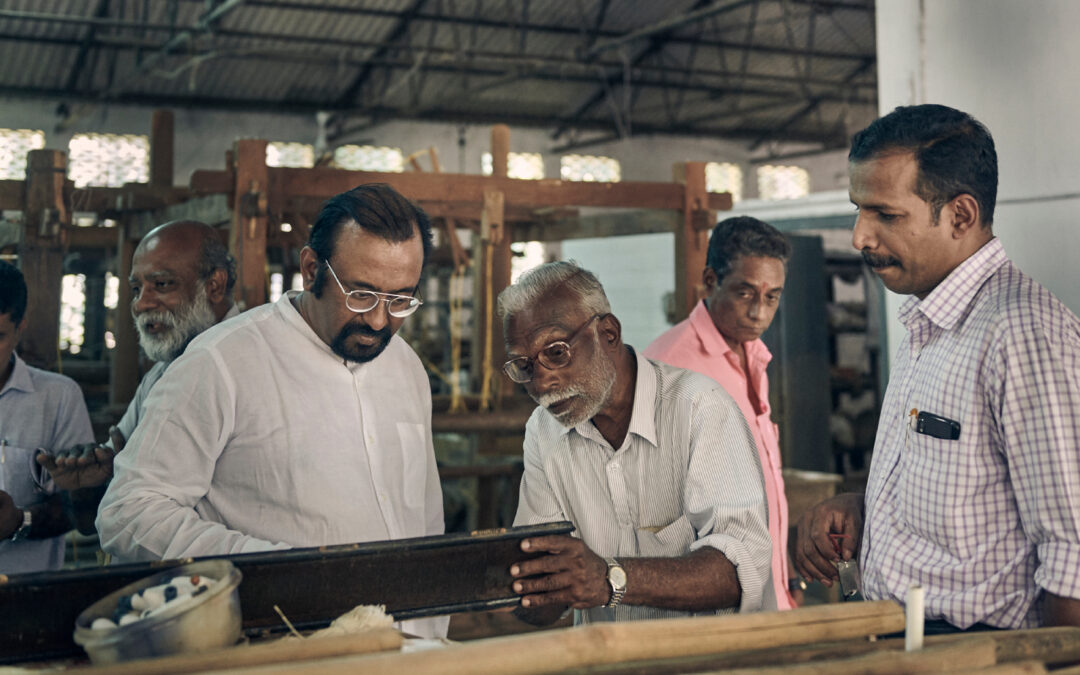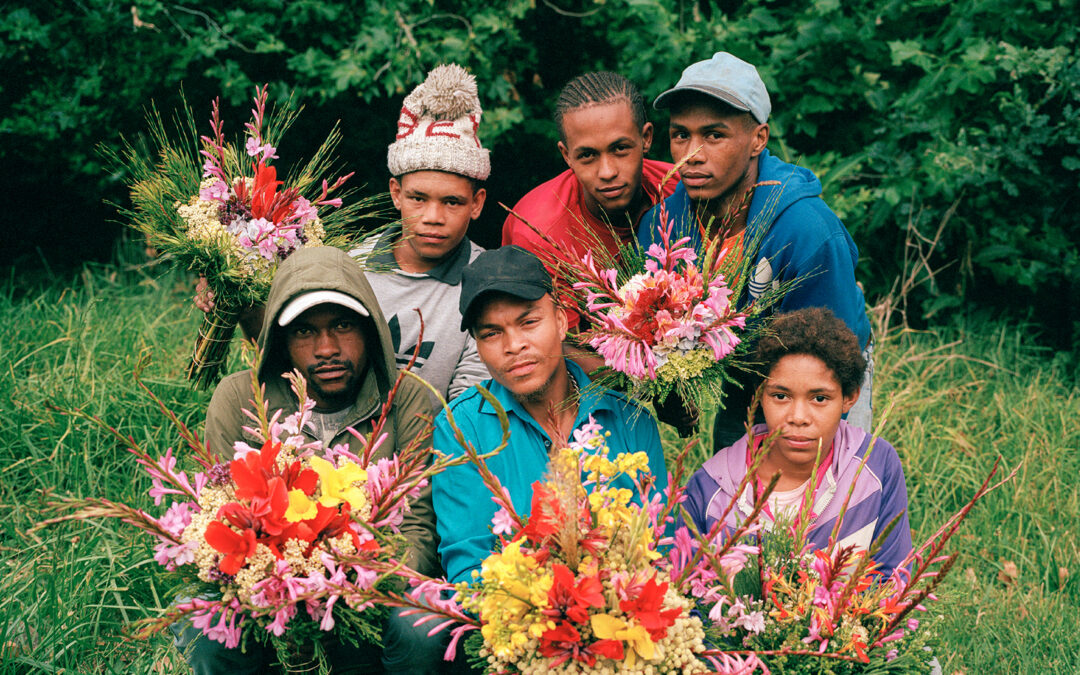For the last few years, fashion has tended toward ‘quiet luxury’ – The Row-esque form of restraint, demure across silhouette, tailoring and especially, colour. Make it tonal, neutral certainly; but limit the presence of colour in any way. Of course, this speaks to one facet of the trend cycle, but it has played a powerful part in creating a cultural mood defined by minimalism and understatement.
So, when a designer like Emily King founded her brand in Cape Town and sought to pursue her vision precisely as she sees fit — through the kaleidoscopic prism through which she views the world — the result is a defiantly liberated, surrealist smorgasbord of colour, fabric, craft and spirit. The brand is as eccentric and fabulous as Emily herself; employing multiple materials and techniques to evoke garments and accessories that you simply can’t take your eyes off, roving for each detail with awe. As Emily puts it, she’s in the business of “dopamine dressing”: a feel-good approach to style that prioritises joy and self-expression.
Rooted in the psychological impact of colour and texture, dopamine dressing is about wearing what lifts your mood — vivid hues, exaggerated silhouettes and tactile materials that spark sensory delight. In fashion, we’re always attempting to derive some sort of originality out of what is presented to us, and most of us find ourselves firmly of the view that there are no original ideas left—just iterative adaptations and clever reimaginings of what’s come before. Emily King Universe as a brand is instinctively a bastion of originality, and utterly representative of who she is. Indeed, hers is a universe; made up of the constellations of her lived experience and the nebulae of her creative instincts. For someone who came up in the commercial fashion industry, with a quick ascension at Sissy Boy straight out of fashion school, seeing through the gravitational pull of a vision entirely her own is an act of independent authorship, and it’s utterly divine.
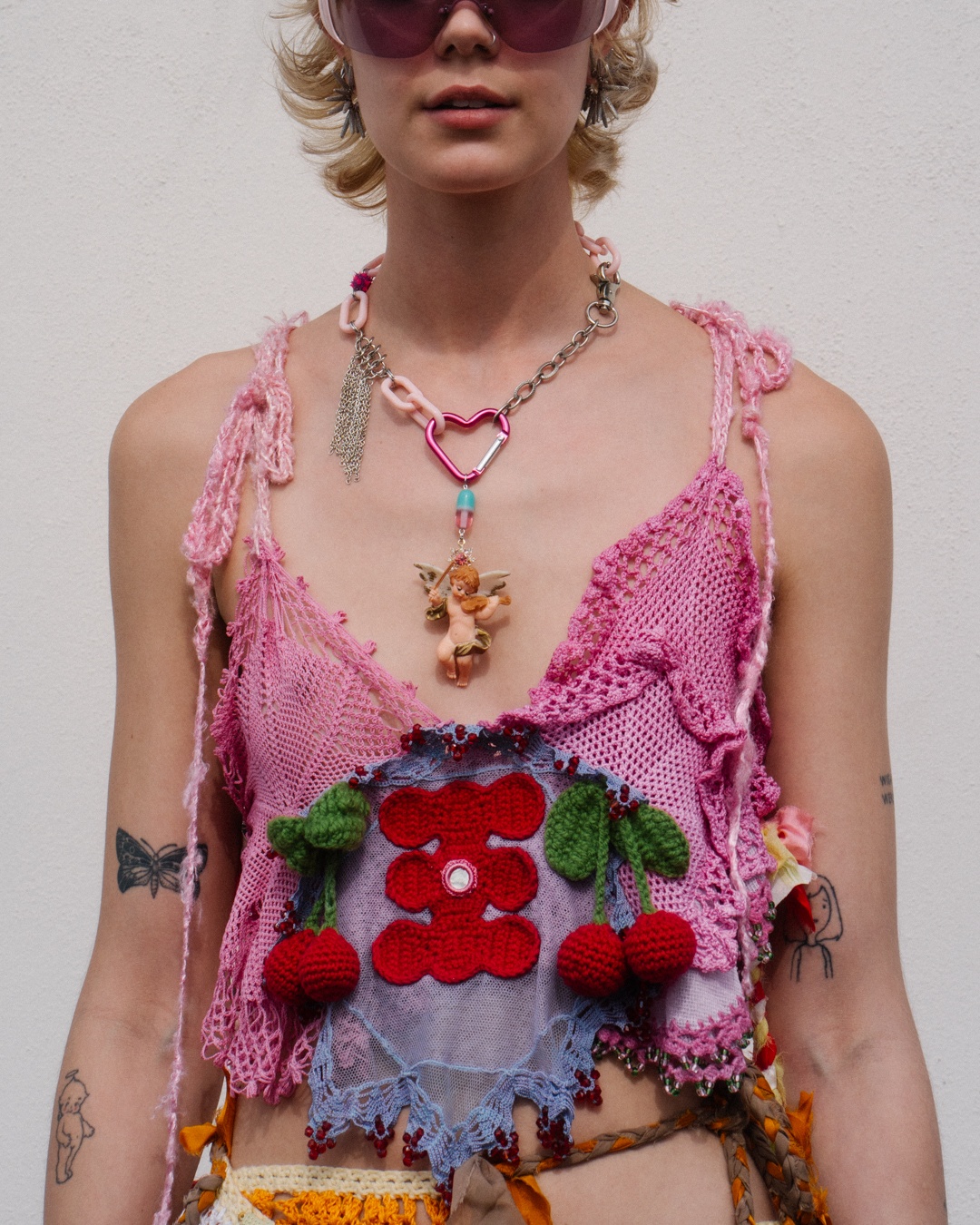
Emily King Universe photographed by Conrad Kieser
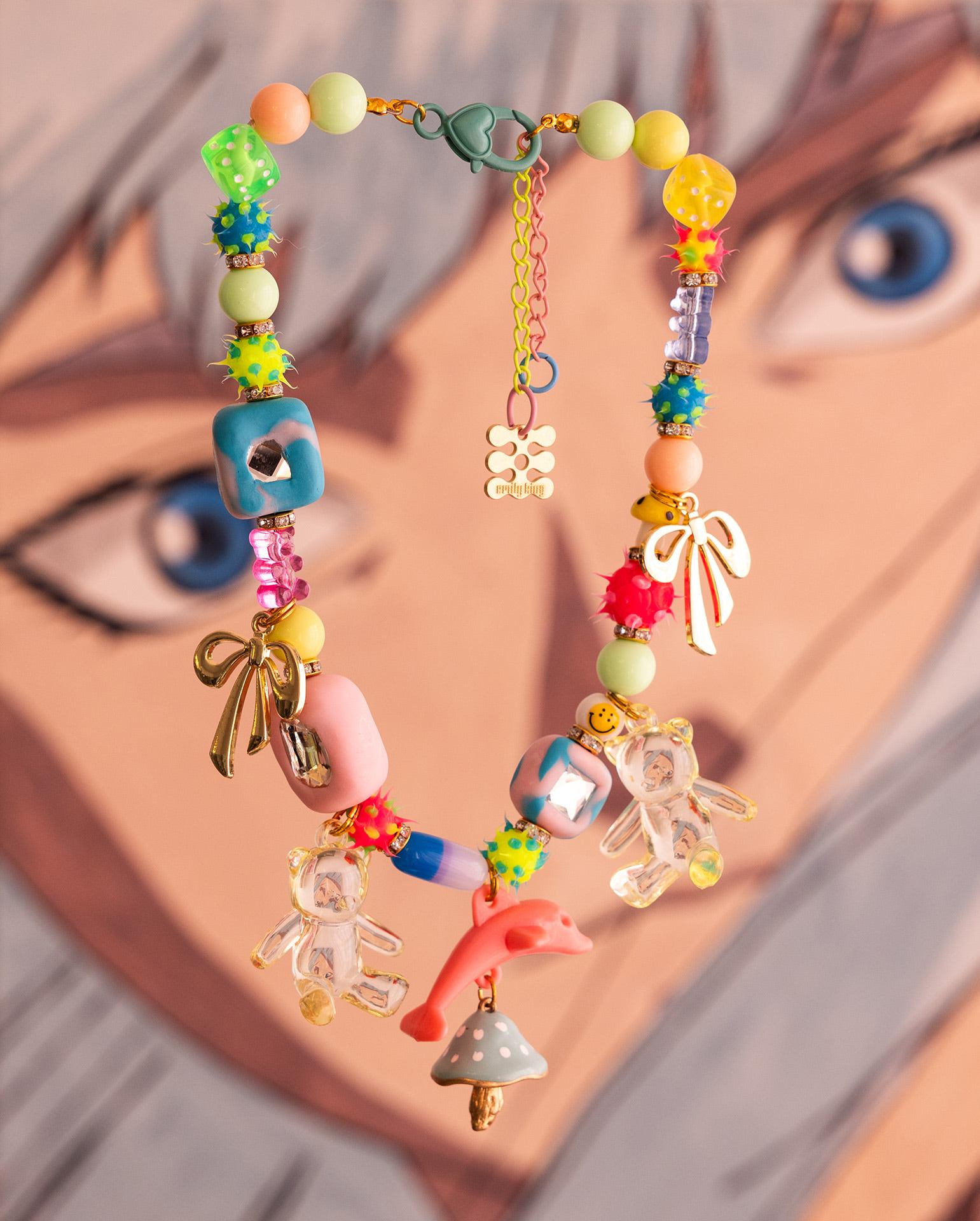
Emily King Universe photographed by Neil Roberts
When I ask Emily about her creative genesis, her answer immediately orbits around the women who raised her. “My gran is definitely the OG,” she laughs. “She’s just unbelievable. She’s a bit of a hermit —she doesn’t leave the house — but she crafts and creates. From a very young age she’s just been making the most unreal things.”
Far from being isolated from style, her grandmother’s quiet life is deeply informed by the high-glamour pages of fashion magazines. “She gets all of her inspiration from runway shows and Vogue magazines. She’s always been heavily influenced by the luxury brands and big designers, which definitely infiltrates into the things she’s made me — like upcycled patchwork denim way before it was trending. She’s quite a pioneer. My gran could’ve been famous, I swear.” Emily muses.
Emily’s mother shares this same flair, somehow a genetic code among her kin, “she’s also incredibly creative — she’s in interior styling — and just very, very trendy. Very fashionable. My mom is an icon.” Emily says, recalling the contrast between her mother and the small-town setting of her childhood. “I grew up in Pietermaritzburg, so she stood out like a sore thumb. She would fetch me from school in ostrich feathers. She’s just an icon — I don’t know how else to put it.”
Emily King Universe is rooted in a generational lineage of creativity that shaped Emily’s early life — long before she had any idea what form her own expression would take. That legacy now lives on through her ‘Universal Legacy Line,’ a capsule within her broader collections made entirely in collaboration with her mother and grandmother. Few things feel more defiantly countercultural within the mass-consumptive, hyper-expansive system of fashion than paring the design process back to the living room — stitching and scheming alongside the women who raised you, sharing knowledge, stories, and creative intuition. “Growing up with such fashionable, creative women was definitely inspiring. It didn’t make me feel like I was going to go into fashion, though,” she reflects. “I didn’t know what I wanted to do when I was younger, but I was always surrounded by creativity, colour and art. My house was always being redone — different prints, different textures. My mom is super innovative and makes do with not a lot — so that was my upbringing.”
Before Emily King Universe became the expressive, experimental force it is becoming today, Emily cut her teeth in the high-speed, hyper-commercial engine room of local fashion — most notably at Sissy Boy, one of South Africa’s most recognisable mass-market womenswear brands. Known for its ultra-feminine silhouettes, form-fitting denim, and club-ready separates, Sissy Boy has long occupied a particular corner of aspirational style for the local market: glamorous, but unmistakably commercial.
For Emily, the brand offered an unmatched fashion education. “I went to school on a music scholarship and thought I’d go into something with music, but it was quite limiting. Nothing was really jumping out at me,” she says. “I took a gap year and lived in London, and I was just so inspired by fashion and everyone’s eclectic style. Growing up in Pietermaritzburg, it was just insane — I didn’t know where to look. It was overwhelming. But it became clear that I wanted to study fashion. I moved back and started studying at Fedisa, and then I got my first job at Sissy Boy — and I was there for 10 years.”
What followed was a crash course in the inner workings of South Africa’s fashion industry. “From day one at Sissy Boy, I was thrown in the deep end. I was appointed as a junior designer, but when I arrived, I was actually the main designer for all the fashion commodities — dresses, jumpsuits, shirts. Not denim, but all the fashion pieces. There wasn’t really a handover — it was just full-on: ‘This is your role now.’” The pace was relentless, but indispensable, “I learned as quickly as I could. I got some amazing opportunities early on — I started travelling with the brand, doing buying trips with the best friend I worked with. It was quite a small team, and there was a high staff turnover, so I kept getting promoted. I went from designing to buying, then our design director resigned, and I became head of design and buying. Two years later I was promoted again to design executive.”
It’s a trajectory that reveals the tension between creativity and structure — a duality familiar to many designers who build their practice inside commercial studios. In many ways, Emily was succeeding by all conventional measures, but something in her was beginning to stir. I’m not sure commercial fashion could ever contain the spirited expression that Emily commands, to which she notes that “to be honest, I didn’t think having my own brand was an option. I didn’t know there was anything else out there for me. I thought, ‘this is my life.’ My parents are also quite traditional — you work a 9–5, you get benefits, medical aid. My dad wants me to be looked after. So it was a shock when I started toying with the idea of resigning.”
Emily’s decision to go her own way was not made lightly. After ten years in corporate fashion, she cashed in her entire Provident Fund to launch her brand — a leap of faith driven by creative frustration and a growing discomfort with the wastefulness of large-scale production. “I really loved what I did, but in the last few years of working I felt a bit trapped,” she says. “I wasn’t inspired by any other brands or retailers. It took a lot of strategic thinking, moodboarding, getting advice, to take the leap, and I have no regrets. I just know I’m on the right path.”
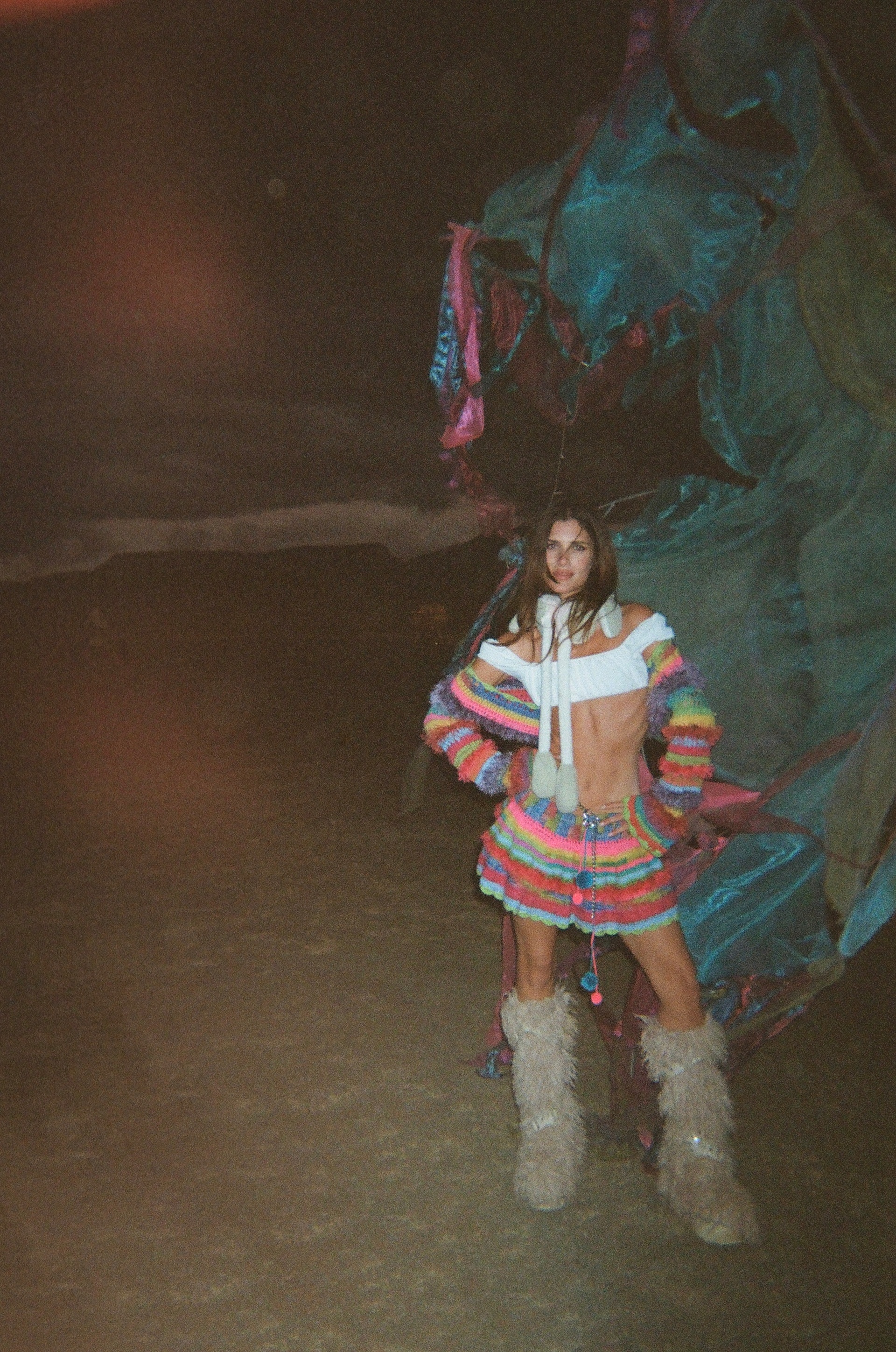
Emily King Universe, courtesy of Emily King
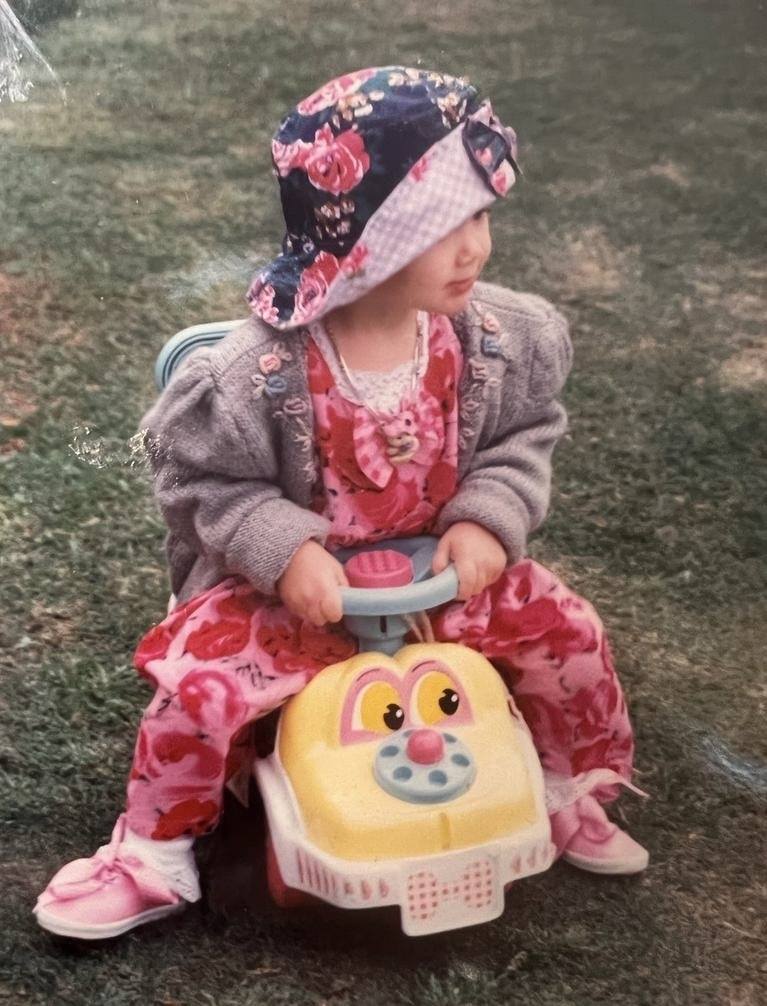
Emily and her childhood eccentric outfits courtesy of her Mama
Emily’s years in commercial fashion had exposed her to the machinery of mass production — the volume, the disposability, the environmental blind spots. “I’d go on buying trips and come back with massive suitcases of samples, only to cut through them with scissors before I even left the airport, just to avoid customs duties. It started to feel so wrong.” Emily has seen the factories in China, and knows the exact playbook to drive profit. “I know the recipe to make money,” she admits. “I feel a calling to bring it back to South Africa and to bring the fashion I wanted to create back to more of an art form.”
That calling now shapes every element of her brand — from small-run production to an insistence on care, craft and local connection. “It’s not the most sustainable business model. I’m not growing exponentially or wholesaling large volumes, but I’ve thought a lot about what I want to stand for. You can’t just churn out endless styles, waste materials and be thoughtless about where things come from. There has to be care — about the materials, about the hands making them. I’m very insistent that everything I create has a purpose.”
Emily King Universe may still be in its early phase, but its creative world is deeply considered and intimately constructed. Emily’s approach to building her range is intuitive, personal, and tactile — worlds apart from the fast-paced, trend-chasing cycles of commercial fashion she left behind. “I usually start by thinking about something I wear a lot,” she explains. “Especially for the ready-to-wear clothing, it’s about staple pieces I’d want in my own wardrobe.” Each garment emerges from Emily’s own style instincts, and then gets filtered through a process of careful refinement.
Some of the most distinctive pieces come from what Emily calls a “crazy design week” with her mother and grandmother — a now-annual ritual that birthed the upcycled range, ‘Universal Legacy Line’ (I’m obsessed); “it’s happened three times now. My mom’s collected vintage jewellery and doilies,” she says. “Weirdly, it all circles back to my Fedisa graduate collection, which was made out of doilies — I actually won the Foschini Design Award with it, like 10 or 11 years ago.” Their design process is chaotic in the best way. “We lay everything out — the house looks like a bomb’s gone off. I’ll pin on the mannequin, my gran will machine sew, my mom does the handwork. It’s a full collaboration.” Her grandmother, ever the punk traditionalist in her own way, might insist the edges stay raw. “She’s so ahead of it,” Emily laughs.
While trends like crochet and upcycling are having a resurgence, Emily notes that these practices have been part of her process for years. “I’ve spent so much time trying to find the right hands to make the crochet pieces,” she says. “I literally found people’s aunties, mums, nannies, grannies. I’ve got three phenomenal suppliers right now.” These include a young woman and her sister who crochet together, a woman named Patricia who handles sampling and production, and even “an incredible guy in the Drakensberg mountains who has a vintage loom and makes scarves for me.”
Across each category — whether it’s a raw-edged hoodie influenced by her gran, a tracksuit in locally made fleece, or her screen-printed t-shirts that she refused to cheapen for margin’s sake — the thread running through is uncompromising craft. “I wasn’t willing to compromise,” Emily says simply. While she continues to develop the clothing side, her heart is increasingly pulled toward accessories. “I’m looking into doing a lost wax course to make more silver jewellery, and hopefully cast my own pendants and charms.” Emily makes her jewellery by hand, and I’m currently obsessed with the wild siren-esque glamour of the Ethereal Collection.
At its core, Emily King Universe is about connection — to materials, to makers, to memory. “I’m still figuring out what categories to grow and where to put more energy,” she says. “Building this little network has been such a dream.”
At its heart, Emily King Universe is a vivid antidote against fashion’s greyscale minimalism — a kaleidoscopic world built from emotion and generational synergy. In an industry often obsessed with polish and polish alone, Emily’s pieces are charged with feeling. “What really inspires me is a feeling,” she says. “Like an emotion you get when you put something on. Maybe it makes you feel childlike or cheeky or confident. I’ve always been drawn to items that evoke mood.”
This intuitive, emotive approach sits at the core of Emily’s design philosophy, and her personal wardrobe reflects it completely. “My cupboard looks like a dress-up box — if it’s a t-shirt, it has piercings or something weird on it. I like people doing a double take.” Creating space for that kind of expression in the real world comes with nuance, and I feel that Emily’s mastery is inviting her customers to take risks and play; “sometimes it takes a festival for someone to wear a colourful necklace,” she reflects. “So it’s a dance — figuring out how to stay relevant and commercial in such a niche space.” Personally, I think our world is longing for the fantastical expression of fashion as escapism. In this, Emily couldn’t be better situated.
Emily’s ultimate vision is fashion as a celebration — of self, of life, of the everyday, and “for fashion to slow down. For people to feel confident and excited to express themselves. I don’t want people to wait for a special occasion to wear something amazing — we should all dress like life’s the party.” This philosophy is a reminder that conscious fashion needn’t be flat or neutral. On dopamine-dressing, Emily muses, “If I’m having a bad day, it’s probably because I’m in a tracksuit,” she laughs. “I always feel better if I’ve got lip gloss on or a cute top. Clothing and accessories are such an amazing way to feel great and to have a colourful, beautiful life.”
In an era of overproduction and overexposure, in which culture appears to be algorithmically flattened, Emily King’s Universe offers a compelling alternative; if fashion is to have a future worth believing in, I reckon it might just look something like this.
Written by Holly Beaton
For more news, visit the Connect Everything Collective homepage www.ceconline.co.za

